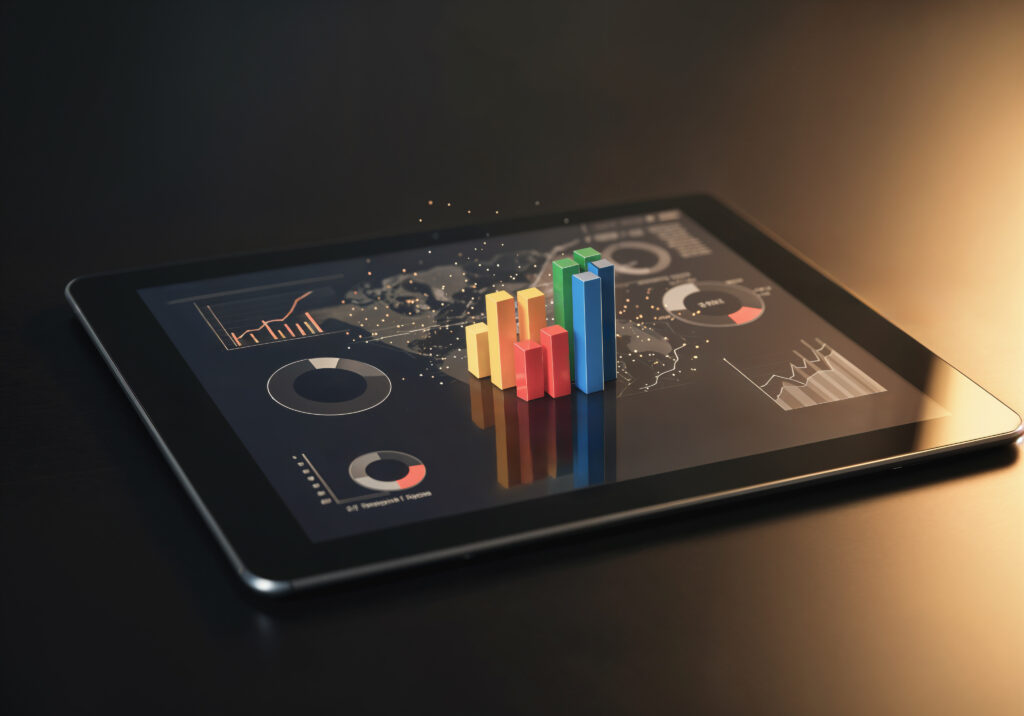1. Introduction – Why Landing Page Design Matters for ROI
In the fast-moving world of digital marketing, your landing page is more than just a destination. It’s the heart of your conversion funnel. Whether you’re selling a product, promoting a service, or capturing leads, the quality of your landing page often determines whether your campaign succeeds or fails.
Imagine spending thousands on ads that bring visitors to your site, only for them to leave within seconds because the page didn’t capture their attention or inspire trust. A well-crafted landing page can bridge that gap, ensuring that your marketing investment delivers measurable returns.
This article explores biist roi with strategic landing page design, drawing on user behavior psychology, best design practices, and actionable optimization steps.

2. Understanding ROI in Landing Pages
ROI (Return on Investment) measures how much revenue you earn compared to the amount you spend. For landing pages, ROI reflects how effectively the page converts visitors into paying customers or qualified leads.
Key elements that impact landing page ROI:
- Conversion rate — the proportion of visitors who complete the intended action.
- Lead quality – whether the conversions are from your target audience.
- Cost per acquisition (CPA) – how much it costs to acquire one customer.
- Average order value (AOV) – the average revenue from each purchase.
A strategic landing page doesn’t just increase conversions; it improves the quality of those conversions, leading to better long-term ROI.
3. Principles of Strategic Landing Page Design
A high-performing landing page follows certain design principles that guide visitors toward a specific action.
a) Clear, Compelling Headline
Your headline should instantly tell visitors what the page is about and why it matters. It’s the first thing they read, so make it count.
b) Focused Value Proposition
Communicate what’s in it for them. Avoid generic statements—be specific about the benefits and results.
c) Visual Hierarchy
Use a clean layout that guides the eye naturally from the headline to the call-to-action (CTA).
d) Mobile-First Design
More than half of web traffic comes from mobile devices, so your landing page must be responsive and easy to navigate on all screen sizes.
e) Fast Loading Speed
Even a one-second delay can prompt visitors to leave your page. Improve performance by optimizing images, writing efficient code, and enabling caching.
4. The Psychology Behind Conversion
Successful landing pages are built with an understanding of how people make decisions online.
Color Psychology – Colors can evoke emotions. For example, green often signals safety and growth, while red creates urgency.
Social Proof – Testimonials, reviews, and case studies make visitors feel confident about your offer.
Urgency and Scarcity – Limited-time offers or countdown timers encourage quicker decisions.
Trust Signals – Security badges, money-back guarantees, and brand logos reassure users.
5. Crafting High-Converting CTAs
The CTA is the final push toward conversion.
Best practices for CTAs:
- Use action-oriented words – “Get Started,” “Claim Your Offer,” “Join Now.”
- Place CTAs strategically – One above the fold and another after key content.
- Make it stand out – Use contrasting colors and larger buttons to draw attention.
- Test variations – Try different button sizes, wording, and placements to see what works best.
6. Examples of ROI-Driven Landing Pages
Let’s look at some practical examples of how strategic design changes improved ROI.
Example 1 – SaaS Sign-Up Page
A software company simplified their form from 7 fields to 3, added a benefit-driven headline, and saw a 40% increase in sign-ups.Example 2 – eCommerce Product Page
By adding customer reviews, improving product images, and emphasizing free shipping, an online store increased sales by 25%.Example 3 – Webinar Registration Page
A coaching business used a countdown timer and emphasized limited spots, boosting registrations by 30%.
7. Data-Driven Optimization
A visually stunning landing page is great — but if you want higher ROI, you need more than just good design. The real magic happens when you track, test, and refine based on actual user behavior.
Powerful tools for smarter optimization:
Google Analytics – Gain insights into bounce rate, conversion rate, and how visitors navigate your site.
Hotjar or Crazy Egg – Use heatmaps and scroll tracking to see exactly where users click and how far they scroll.
A/B Testing – Compare two page versions to find out which one converts better.
When you regularly review performance data, you’re not guessing — you’re making data-backed decisions that steadily increase conversions and maximize your return on investment.
8. Landing Page Trends for 2025
The online environment changes fast, and so do design expectations. In 2025, we’re seeing:
AI-Personalized Content – Tailoring the landing page to each visitor’s preferences.
Video-Centric Pages – Using short videos to explain products quickly.
Interactive Elements – Quizzes, calculators, and polls that engage users.
Minimalist Design – Fewer distractions for faster decision-making.
Bold Typography – Large, attention-grabbing fonts for clarity.
9. Common Mistakes That Kill ROI
ven well-designed pages can fail if these mistakes are made:
Too many CTAs – Confuses visitors about the next step.
Overloaded text – Long paragraphs without breaks lose reader attention.
Slow load times – Every second counts.
Not optimized for mobile – Alienates a huge portion of your audience.
No clear benefit – Visitors won’t act if they don’t see the value.
10. Step-by-Step Process
A high-performing landing page is never a stroke of luck — it’s the result of careful planning and a well-executed strategy.
Follow these steps to ensure every element works toward higher conversions and ROI:
Research Your Audience – Identify your ideal visitors, understand their pain points, and learn what motivates them to take action.
Define Your Goal – Whether it’s sales, lead generation, or sign-ups, your goal will guide every design and content decision.
Plan Your Layout – Keep it clean, intuitive, and focused on guiding users toward your call-to-action (CTA).
Write Compelling Copy – Highlight the benefits your audience will get, not just the features of your product or service.
Incorporate Trust Signals – Add reviews, testimonials, security badges, or money-back guarantees to build credibility.
Optimize for Speed & Mobile – Ensure your page loads in under 3 seconds and works seamlessly on all devices.
Launch & Monitor – Track conversion rates, bounce rates, and user behavior from day one.
Test & Refine – Use A/B testing and analytics to make data-driven improvements until you achieve peak performance.
A well-planned landing page isn’t just a pretty design — it’s a conversion machine that turns visitors into paying customers.
11. Measuring ROI Effectively
To know if your landing page is worth the investment:
Calculate ROI using (Revenue – Cost) / Cost.
Track both short-term wins (conversions) and long-term results (repeat customers).
Create reports to identify what’s working and what’s not.
12. Conclusion – The ROI Mindset
Strategic landing page design is not about pretty visuals—it’s about creating a focused, persuasive experience that turns visitors into loyal customers. Every element, from the headline to the button color, plays a role in the final conversion rate.
Key takeaways:
Focus on clarity and benefits.
Use data to guide design improvements.
Keep testing for better results.
When you combine creativity with strategy, your landing page becomes a powerful ROI machine.
